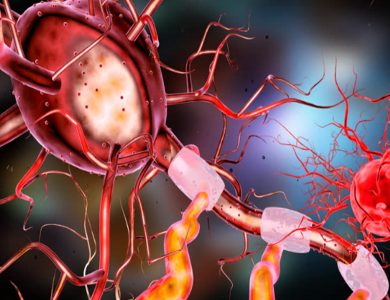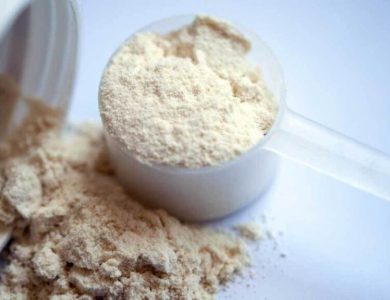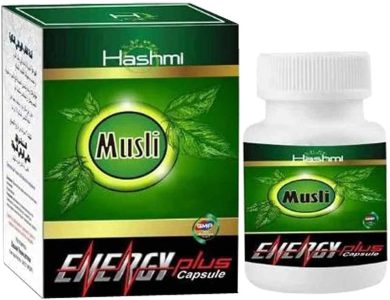In recent years, exosome therapy has emerged as a groundbreaking advancement in the field of regenerative medicine. This innovative approach leverages the power of exosomes—tiny vesicles secreted by cells—to facilitate healing, repair, and regeneration in various medical conditions. In this article, we will delve into the science behind Exosomes treatment, exploring how these vesicles function, their composition, and their potential applications in promoting healing and regeneration.
Understanding Exosomes
What Are Exosomes?
Exosomes are extracellular vesicles that range in size from 30 to 150 nanometers. They are secreted by a wide array of cell types, including stem cells, immune cells, and even tumor cells. Exosomes play a crucial role in intercellular communication, acting as vehicles for the transfer of bioactive molecules such as proteins, lipids, and nucleic acids between cells. This communication is essential for maintaining homeostasis, regulating immune responses, and facilitating tissue repair processes.
Formation and Release of Exosomes
Exosomes are formed within the endosomal system of the cell. Initially, the plasma membrane invaginates to form a membrane-bound compartment called an early endosome. This compartment can then mature into a late endosome, which fuses with intraluminal vesicles to create multivesicular bodies (MVBs). These MVBs can either fuse with lysosomes for degradation or be released into the extracellular space as exosomes when they fuse with the plasma membrane. Once in the extracellular environment, exosomes can be taken up by neighboring or distant cells, where they exert their effects.
Composition of Exosomes
The composition of exosomes is highly variable and reflects the cellular origin of the exosomes. They typically contain a diverse array of bioactive molecules, including:
- Proteins: Exosomes carry proteins involved in various cellular processes, including signaling, adhesion, and immune response modulation.
- Lipids: The lipid bilayer of exosomes provides stability and facilitates membrane fusion, while lipid molecules play roles in cell signaling.
- Nucleic Acids: Exosomes contain messenger RNA (mRNA), microRNA (miRNA), and other non-coding RNAs that can regulate gene expression in recipient cells.
This complex composition allows exosomes to carry specific cargo that can influence the behavior of recipient cells, promoting various biological processes.
Mechanism of Action: How Exosomes Promote Healing and Regeneration
Cell Communication and Signaling
The primary function of exosomes is to mediate communication between cells. When exosomes are taken up by recipient cells, they deliver their bioactive cargo, which can influence cellular behavior in several ways:
- Regulation of Gene Expression: The nucleic acids carried by exosomes can alter gene expression in recipient cells, leading to changes in protein production and cellular function. For example, exosomal miRNAs can inhibit or promote the expression of target genes, affecting processes like inflammation and apoptosis (programmed cell death).
- Modulation of Immune Responses: Exosomes can have immunomodulatory effects, influencing the activity of immune cells. For instance, exosomes derived from mesenchymal stem cells (MSCs) can suppress excessive immune responses, making them valuable in treating autoimmune diseases and chronic inflammatory conditions.
- Promotion of Angiogenesis: Exosomes can stimulate the formation of new blood vessels (angiogenesis) by promoting endothelial cell proliferation and migration. This process is crucial for tissue repair, as it enhances blood flow and oxygen delivery to damaged tissues.
Tissue Repair and Regeneration
Exosomes play a vital role in the repair and regeneration of damaged tissues. Here are some key mechanisms through which exosomes promote healing:
- Stem Cell Signaling: Exosomes derived from stem cells, particularly MSCs, contain various growth factors and cytokines that can enhance the proliferation and differentiation of local cells involved in tissue repair. These growth factors stimulate fibroblasts to produce collagen and other extracellular matrix components essential for wound healing.
- Reduction of Inflammation: Chronic inflammation can impede the healing process and contribute to tissue damage. Exosomes have been shown to possess anti-inflammatory properties, helping to modulate immune responses and reduce the release of pro-inflammatory cytokines. This creates a more favorable environment for tissue regeneration.
- Promotion of Cell Survival: Exosomes can protect cells from apoptosis and promote cell survival in adverse conditions. For example, they can deliver antioxidant molecules that help neutralize harmful reactive oxygen species (ROS) generated during tissue injury.
Applications of Exosome Treatment in Medicine
Orthopedics and Sports Medicine
Exosome therapy has gained significant traction in orthopedic and sports medicine for its ability to promote healing in musculoskeletal injuries. Whether it’s a ligament tear, cartilage injury, or joint degeneration, exosomes can help accelerate the healing process. By injecting exosomes directly into the injured area, practitioners can harness their regenerative properties to enhance tissue repair, reduce pain, and improve overall joint function.
Dermatology and Aesthetic Medicine
In the field of dermatology, exosome therapy has shown promise for skin rejuvenation and wound healing. Exosomes can be used to improve skin texture, reduce fine lines and wrinkles, and promote hair regrowth in individuals experiencing hair loss. The growth factors and proteins within exosomes can stimulate collagen production, leading to improved skin elasticity and overall appearance.
Cardiovascular Medicine
Exosome therapy is being explored in cardiovascular medicine, particularly for its potential to enhance heart repair after ischemic events, such as heart attacks. Exosomes derived from cardiac stem cells may deliver therapeutic factors that promote myocardial regeneration, improve cardiac function, and reduce scar formation.
Neurology
Emerging research suggests that exosomes may play a role in neuroprotection and recovery from neurological injuries. Exosomes derived from neural stem cells contain neuroprotective factors that could potentially support neuronal health and function in conditions like stroke, traumatic brain injury, and neurodegenerative diseases.
Chronic Wound Healing
Exosome therapy has shown significant promise in promoting the healing of chronic wounds, such as diabetic ulcers. The anti-inflammatory and regenerative properties of exosomes can enhance the healing process and reduce the risk of infection, making them a valuable tool in wound care.
Safety and Efficacy of Exosome Treatment
Safety Profile
Exosome therapy has been found to have a favorable safety profile. Since exosomes are naturally occurring components of the body, they are generally well-tolerated, with minimal risk of adverse reactions. However, it is essential to ensure that exosomes are sourced from reputable suppliers and adhere to stringent quality control standards.
Clinical Studies
Ongoing research and clinical studies are essential to validate the efficacy of exosome therapy in various applications. Preliminary studies have shown promising results, with improvements in healing, regeneration, and overall patient outcomes. As more research is conducted, a clearer understanding of the optimal methods of exosome production, administration, and treatment protocols will emerge.
The Future of Exosome Treatment
Advancements in Research
The field of exosome research is rapidly evolving, with new discoveries and applications being explored continuously. As our understanding of exosomes deepens, we can anticipate novel therapeutic strategies that leverage their regenerative properties. Future studies may focus on optimizing exosome isolation and characterization techniques, enhancing their therapeutic efficacy, and investigating their potential in various medical fields.
Personalized Medicine
Exosome therapy may pave the way for personalized medicine approaches. By using exosomes derived from a patient’s own cells, treatments can be tailored to individual needs, maximizing therapeutic outcomes and minimizing potential side effects. This personalized approach aligns with the growing trend towards individualized healthcare solutions.
Combination Therapies
Exosome therapy has the potential to complement existing treatments. Researchers are exploring the combination of exosome therapy with other regenerative techniques, such as stem cell therapy or platelet-rich plasma (PRP) therapy, to enhance overall therapeutic effects. The integration of these therapies could lead to more effective treatment protocols for various conditions.
Conclusion
Exosomes treatment represents a revolutionary advancement in regenerative medicine, harnessing the power of these tiny vesicles to promote healing and regeneration. Through their ability to facilitate cell communication, reduce inflammation, and stimulate tissue repair, exosomes hold immense promise for a wide range of medical applications. As research continues to unfold, exosome therapy may redefine our approach to treating injuries and diseases, offering new hope for patients seeking effective and minimally invasive solutions. With its potential to transform the landscape of regenerative medicine, exosome therapy is undoubtedly a field to watch in the coming years.




